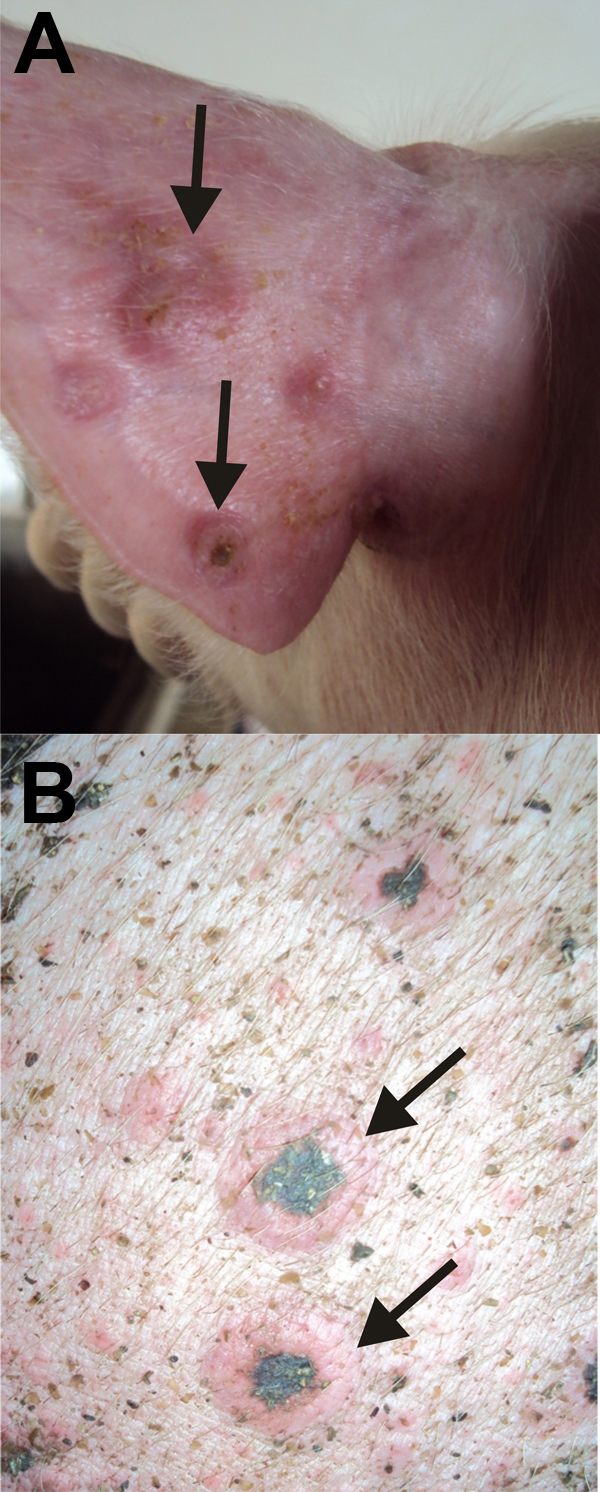Volume 17, Number 10—October 2011
Letter
Swinepox Virus Outbreak, Brazil, 2011
Figure A1

Figure A1. Lesions caused by swinepox virus, Brazil, 2011. A) Ear of a piglet in the nursery unit. Arrows indicate vesicles filled with pustular fluid. B) Trunk of a pig in the finishing unit. Arrows indicate umbilicated red lesions with black scabs in the center.
Page created: September 27, 2011
Page updated: October 03, 2011
Page reviewed: October 03, 2011
The conclusions, findings, and opinions expressed by authors contributing to this journal do not necessarily reflect the official position of the U.S. Department of Health and Human Services, the Public Health Service, the Centers for Disease Control and Prevention, or the authors' affiliated institutions. Use of trade names is for identification only and does not imply endorsement by any of the groups named above.